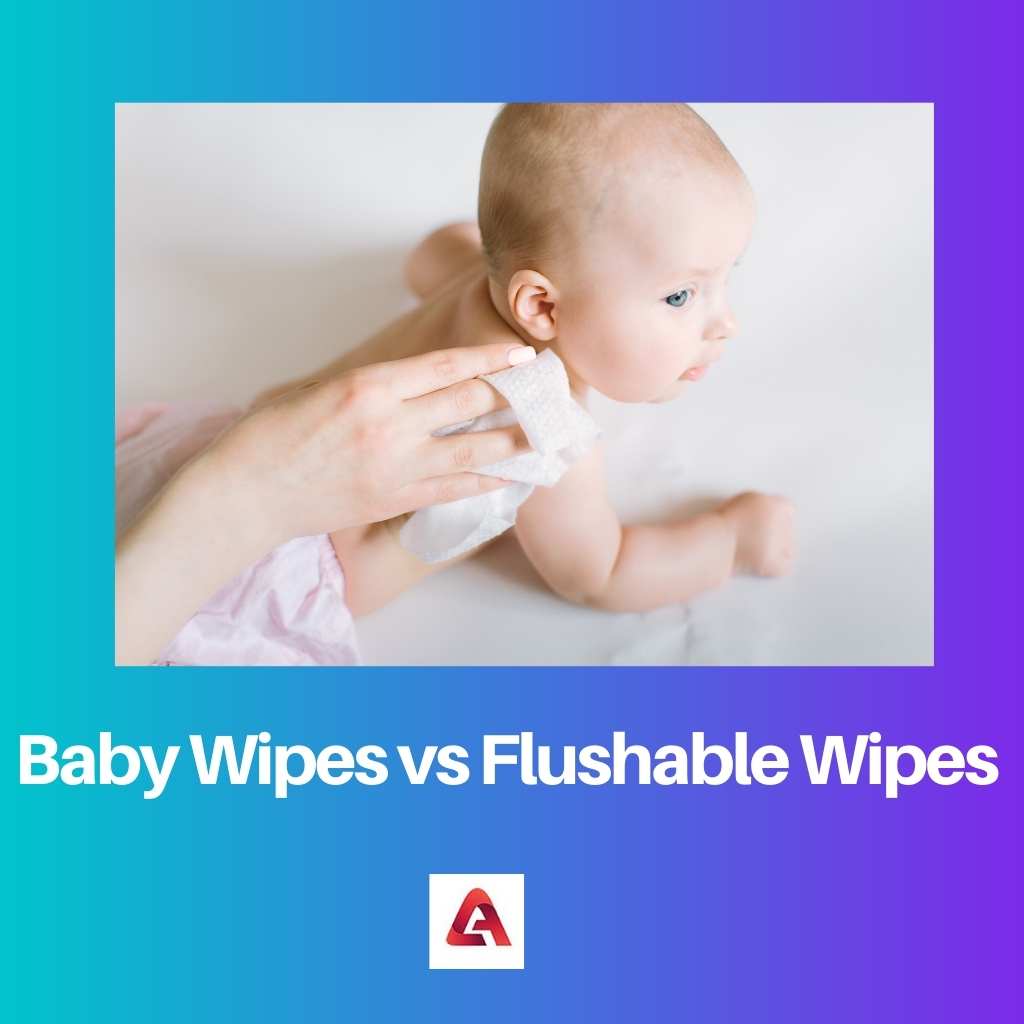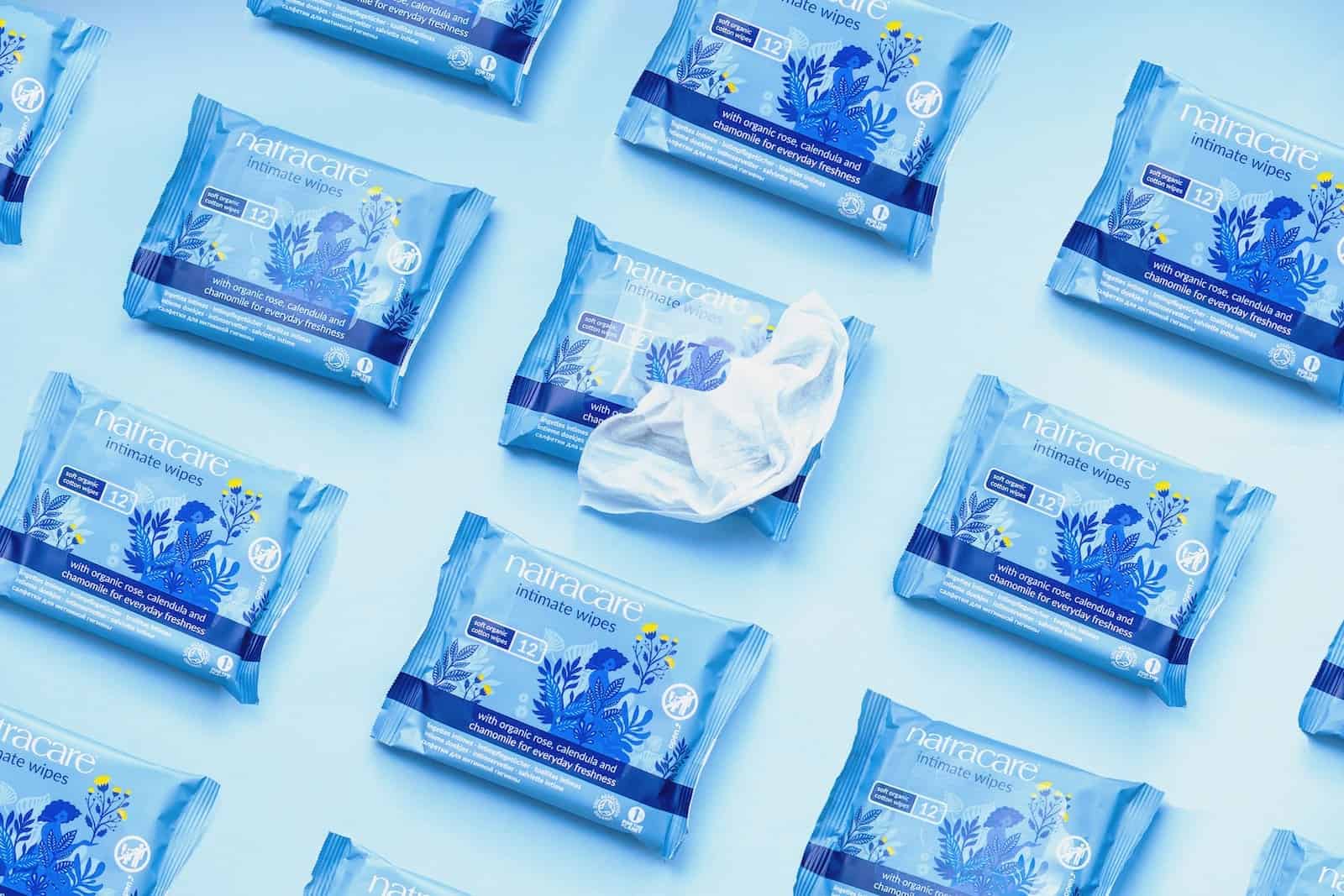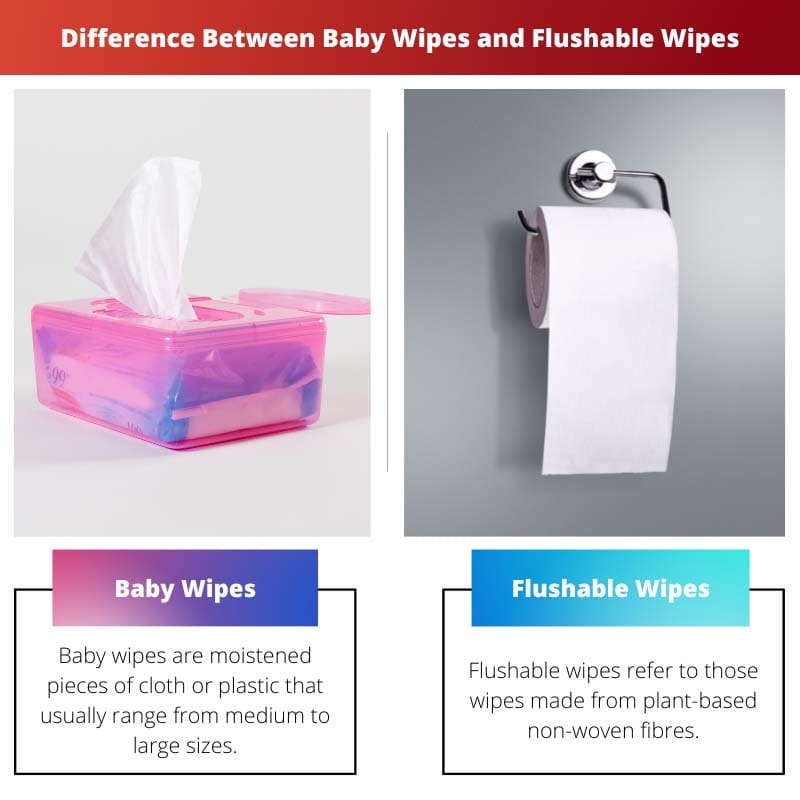Personal hygiene and sanitation are important even when a person is travelling. However, in such scenarios, water may not be readily available for cleansing purposes.
Therefore, wipes come to the rescue. Several different types of wipes are available in the market today. Each type caters to the needs of specific age groups.
Baby wipes and flushable wipes are two popular types of wipes. While they may seem similar, there are distinct features among the two.
Key Takeaways
- Baby wipes are designed for cleaning babies’ skin and are not flushable, while flushable wipes are used for personal hygiene and can be flushed down the toilet.
- Baby wipes are made of soft, gentle materials on the skin, while flushable wipes are thicker and more durable.
- Flushable wipes are more environmentally friendly than baby wipes because they can be disposed of in the toilet and do not contribute to landfill waste.
Baby Wipes vs Flushable Wipes
Baby wipes are designed for the sensitive skin of babies, infused with gentle cleansing ingredients and moisturizers. Flushable wipes are made to be sewer and septic safe, designed to break down in water more easily than regular baby wipes, and intended for personal adult hygiene use.

Baby wipes are specially designed for sensitive baby skin. Over the years, they have become increasingly popular with a rise in awareness of the maintenance of personal hygiene of infants.
Baby wipes are pivotal to preventing any diaper rashes. In addition, the use of baby wipes helps in the maintenance of the normal ph level of the baby. Baby wipes may be used for cleansing the baby’s face, arms, or legs as well.
Flushable wipes refer to wipes that are made to be easily flushed and do not clog the sewer system. Flushable wipes are more sturdy than toilet paper.
Moreover, the moisture present in flushable wipes allows individuals to maintain their hygiene. However, not all flushable wipes may be flushable. Consequently, they clog the drains and sewers.
Comparison Table
| Parameters of Comparison | Baby Wipes | Flushable Wipes |
|---|---|---|
| Target Age | Baby wipes are meant for infants and toddlers. | Flushable wipes are meant for children and older people. |
| Type | Baby wipes are not flushable. | Flushable wipes, as indicated by name, can be flushed. |
| Alcohol | Baby wipes are alcohol free. | Flushable wipes have mild disinfectant like isopropyl alcohol. |
| Size | Baby wipes are smaller than flushable wipes. | Flushable wipes are larger than baby wipes. |
| Composition | Baby wipes are made from cloth or plastic. | Flushable wipes are made from plant-based non woven fibres. |
What are Baby Wipes?
Baby wipes are moistened pieces of cloth or plastic that range from medium to large sizes. Baby wipes may come in individual packaging for convenience.
However, baby wipes may come in the form of a roll that has individual wipes that can be torn off. The main purpose of baby wipes is to cleanse the sensitive skin of infants.
The composition of baby wipes ranges from gentle cleansing ingredients to alcohol-based ingredients. Baby wipes come in different packs and sizes.
A usual baby wipe packet contains up to 80 wipes. Additionally, baby wipes come with dispensing mechanisms.
It is speculated that baby wipes originated in the mid-1950s primarily because people wanted cleansing wipes for travelling purposes.
Nice-Pak is one of the first companies that produced baby wipes. Parents who wish to opt for environment-friendly and budget-friendly baby wipes opt for washable wipes.
Moreover, some parents choose to use baby wipes made from cloth because they are more effective at cleaning solids from the skin as compared to the commercial one using baby wipes.
Some famous baby wipe brands are Himalaya Gentle Baby Wipes, Baby Dove Rich Moisture Baby Wipes, Pampers Fresh Clean Baby Wipes, Mee Mee Caring Baby Wet Wipes, and Mamaearth Indias First Organic
Bamboo Based Baby Wipes.
Baby wipes are important to ensure that mess from dirty diapers does not hamper the normal Ph balance of an infant.

What are Flushable Wipes?
Flushable wipes refer to those wipes made from plant-based non-woven fibres. A prominent feature of these flushable wipes is that they can break down in the sewer system.
Although flushable wipes are advertised as easy going down the sewer, this may not always be the case. Usually, wipes made out of plastic and other synthetic fibres are non-flushable.
The texture of one type of flushable wipe differs from another. For instance, while one brand of flushable wipes may offer soft and cloth-like wipes, others may offer wipes that are easily tearable.
Some brands may manufacture stretchable wipes. Yet some others may have a light texture that provides a more effective scrub. Thus, individuals have many options to choose from.
There are a variety of features offered by flushable wipes. Firstly, flushable wipes may be scented or unscented. Some people prefer wipes with a mild scent.
Yet others choose to purchase fragrance-free wipes. Secondly, flushable wipes may contain or not contain alcohol. Therefore, individuals can read the ingredients list to choose the wipes that best suit their skin.
While some flushable wipes may be smooth, others are textured. The texture and dimensions of flushable wipes vary according to the brand and category of the wipes.
In addition, there are multiple package options to choose from. Flushable wipes are considered an ideal option over toilet paper from a hygiene perspective.
Main Differences Between Baby Wipes and Flushable Wipes
- While baby wipes are free of any harsh chemicals, flushable wipes contain cleansers and antibacterials.
- The ingredients in baby wipes are more gentle and mild than those in flushable wipes.
- The size of baby wipes is smaller than that of flushable wipes.
- Baby wipes are meant for infants whereas flushable wipes are meant for every other age group except infants and toddlers.
- Popular baby wipes brands are Baby Dove Rich Moisture Baby Wipes and Pampers Fresh Clean Baby Wipes. In contrast, a popular flushable wipes brand is Cottonelle FreshCare Flushable Cleansing Cloths.

- https://nicencleanwipes.com/apps/articles/flushable-wipes-vs-toilet-paper#:~:text=Flushable%20wipes%2C%20also%20called%20moist,a%20replacement%20for%20toilet%20paper.
- https://en.wikipedia.org/wiki/Wet_wipe#Baby_wipes
